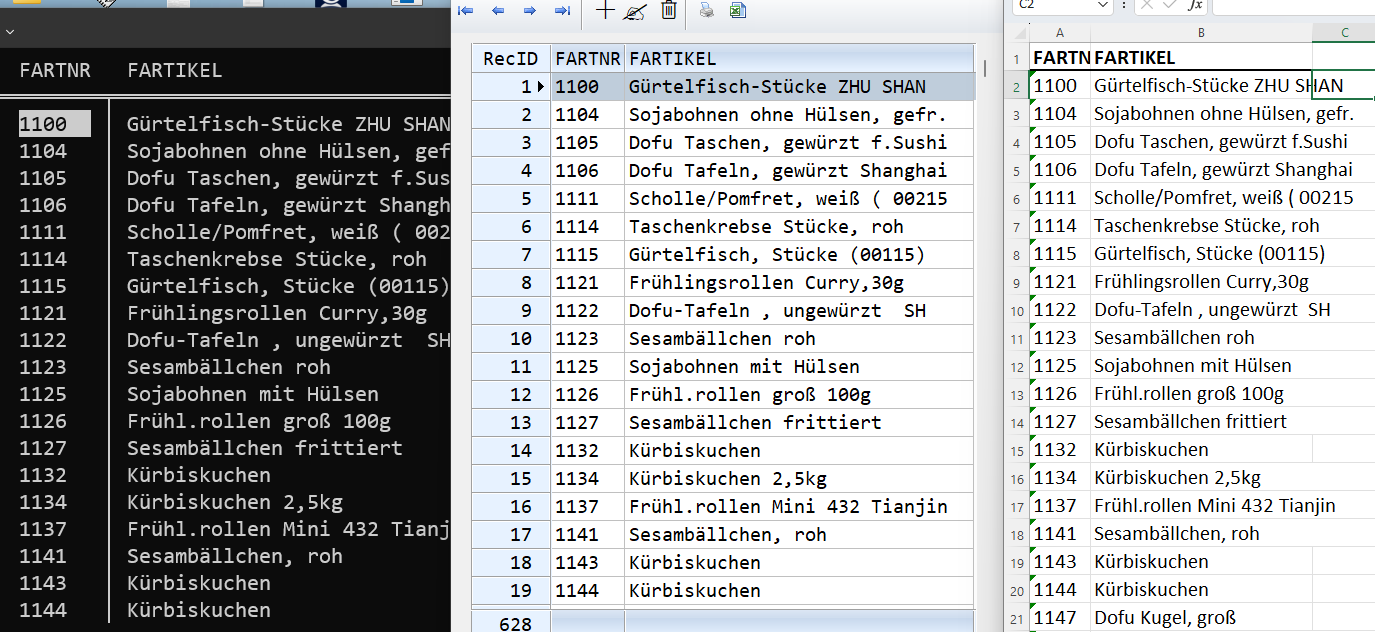Re: not ISOEM(), ISANSI() or IsUTF8()
Posted: Sat Sep 02, 2023 3:25 am
Yes.to say it again : i need "read" from existing DBF, NOT "made" it from CODE
This is what we are very much interested to support you with.
We request you to please send a few thousand records from the existing dbf, instead of a created dbf (say with chr(1) to chr(255))
You may use https://wetransfer.com/. Please send the download link to me and also Mr.Antonio.
The version of FWH to be released, will come with an interface to DrXlsx lib. Conversion of AnsiToUtf8 is automatic."only" DrXlsx LIB need UTF8 where German "Umlaute" fail WHEN it come from German OEM DBF
Using FWH methods/functions like :ToExcel() or DbfToExcel() do not require the user to convert data into utf8.
What all the work a programmer needs to do is to set oBrw:lOemAnsi := .t. or oCol:lOemAnsi := .t. for the required columns and then export to Excel. All conversions will be automatically taken care by the FWH interface to DrXlsx.
Hope we can not make it easier than this.
This is where we want to support you and request you to share a few thousand records with us. (anywhere between 5000 to 15000)Sample which i used have > 350000 Records but only 0,02 % have "Umlaute"
so i have to "test" every Record / FIELD Type "C" if it have "Umlaute"
Even now, you can browse the dbf as it is by setting oBrw:lOemAnsi := .t. and the browse should dislpay the same Umlauts as you see using DBEDIT of Harbour in DOS prompt. In any case, we will have an opportunity to test if you share the data.
Yes and I will send you the Excel file.Question : did you get Email with Link to "my" DBF
A few points:
The 40 characters from 129 to 168 are treated as OEM and have ANSI equivalents.
There are some OEM characters like some Box characters, etc. which have NO equivaents at all in ANSI and so they can never be displayed in Windows the same way as they appear in DOS.
